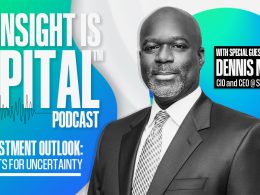You have to get two things right: the "normal" future P/E and the prospective long-term earnings growth rate g. Standard FOE analysis misses on both counts. Very simply, looking out over a 7-10 year horizon, the proper historical norm for price-to-forward operating earnings is approximately 12.7. Moreover, one cannot simply apply the long-term operating earnings growth rate of 6.3% (0.063) as an unchanging measure of g. Rather, an accurate growth rate for the model has to reflect the level of profit margins at any point in time, since the current P/E multiple may reflect either depressed or elevated earnings. For a 10-year investment horizon, the proper value of g should take into account the gradual normalization of margins. Historically, the best estimate is approximately:
g = 1.063 x (0.072 / (FOE/S&P 500 Revenues))^(1/10) - 1
The chart below presents the historical projections obtained using this analysis, along with the actual 10-year total returns achieved by the S&P 500.

Currently, the forward operating earnings model above suggests an average annual 10-year total return for the S&P 500 of 5.5%, while indicating that the S&P 500 was briefly and moderately undervalued at the 2009 market low. Not surprisingly, the 1988-1991 model projections underestimated the market's subsequent 10-year total return, as the period a decade later - between 1998 and 2001 - represented the extremes of the subsequent valuation bubble. Overall, the correspondence between projected and actual 10-year market returns is very close. Taken together, my impression is that this is a record that a reasonable and informative valuation model ought to produce.













